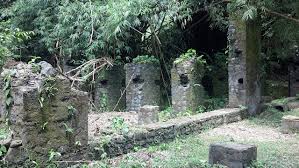



Akiba Tours


Mont Atlantika
It is an extension Cameroon chain of volcanic mountain which shares the borders with Nigeria in the Adamawa state and the Northern region of Cameroon. At the foot of this mountain lives a population known as the Koma who are tide to their ancestral customs and tradition (religion) despite being surrounded by Muslims. At this place, lots of activities like trekking (advisable to people on good physical condition), cultural evenings, discovery of an ancient civilization and lots of safaris ad not far is the Faro National park where safari hunting is practiced.


Foumban Palace
This palace is a UNESCO cultural heritage and can be visited all year round but the visit can be best associated to its cultural feast (Nguon festival) to give it a memorable site or trip. It can also be associated other activities which might be the trekking on mount Mbapit, visit the Fulani-Boroco population with their mode of life and learn some techniques on blacksmith.


Bafut Kingdom
It is a UNESCO cultural heritage located in the North-West region of Cameroon, about 17 km from Bamenda and along the Ring-road. The palace itself is the centre of exhibition of the Grassfield culture through it museum, welcoming visitors with diverse cultural dances. While in Bafut, possibility of learning their gastronomy, farming and socializing with the local population.


Mount Cameroon
Discovered in the 5th Century BC by the Carthaginian navigator Hannon who called it “the chariot of gods”, Mount Cameroon is today known as Mount Fako, Mongo ma Lobo (local appellation) or Mount Cameroon. Mount Cameroon is located in the South-West region of Cameroon about 75 km from the city of Douala. It is an active volcano which has erupted more than 9 times and the last in 2000 with the height of 4095 meters (13 510 feet). It is the highest mountain in Central and West Africa. It is a beautiful mountain to climb as you pass through numerous different “ecological zone”, including farmland, tropical rainforest, savannah, and volcanic landscapes till the summit. The flagship species of Mount Cameroon is the forest elephant, Mount Cameroon Francolin. The views from the summit are spectacular from where one can see Buea, Limbe, Douala, the Atlantic Ocean, and at times the island of Bioko. From December through Mid-March, dry season, it is always the best time to climb the mountain even though it can be accessible all year round depending on your fitness.


Campo National Park
Situated in the far South of the Southern region sharing borders with the Equatorial Guinea and the Atlantic Ocean, drive on earth road from Kribi covering about 75 km. Like a few parks in Cameroon, it is good for adventure. Unique of it’s dense equatorial forest shelter, seaside, forest and beach and experience sleeping in the wild with safety. Historical souvenirs within the park.


Bimbia
Bimbia comprises three villages: Bonangombe, Dikolo and Bonabille. Considerable trading developed in Bimbia mainly in the form of trade by barter. The Isubu people of the area soon carved out a role for themseves as middle men in the trading of ivory, pepper (chilli) and kola nuts from the interior. However a major commodity was slaves destined for nearby islands and the more distant West Indies and Southern States of America.
In Bimbia, it is possible to see the ruins of Barracoons in which slaves were kept prior to sale or transportation.
What to see in Bimbia:
- The original site of Alfred Saker camp
- Joseph Merrick monument
- The ancient Canon used to warn off prospective slave traders
- Ruins of the Barracoons and slave trading sites
- A shoreline of jagged black larva rocks
- A nature trail



The Lobe’s Waterfall
The Lobe’s Waterfall is indeed a remarkable geosite located in the Southern part of the coast of Cameroon where the river flows into the Atlantic Ocean via a series of waterfalls. This is the only Fall in the world where the waterfall empties directly into the sea. It is a natural landscape, a submitted UNESCO world heritage site.